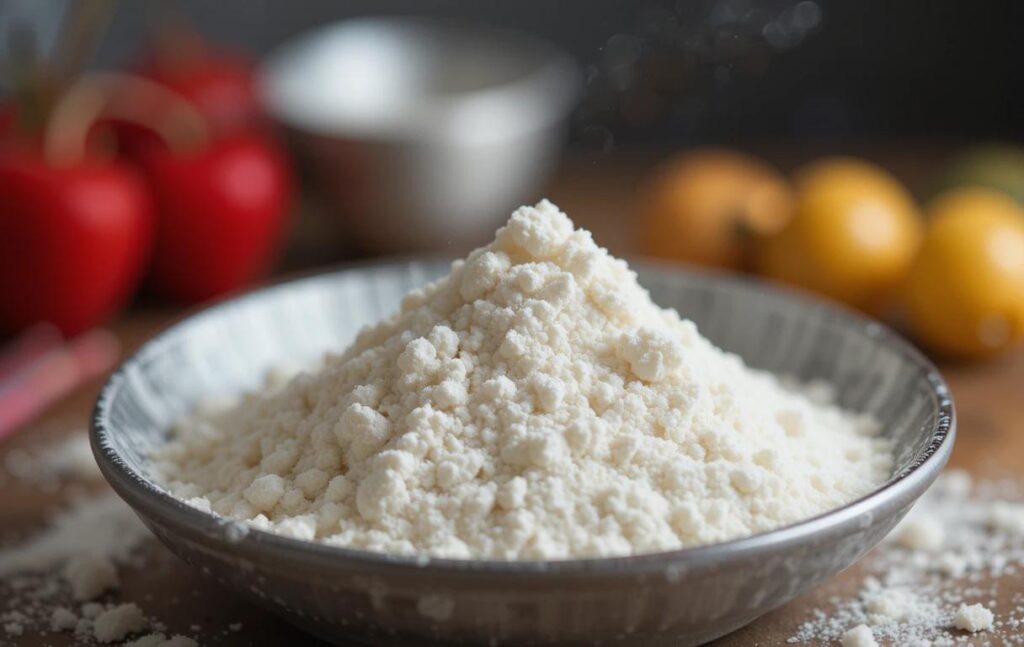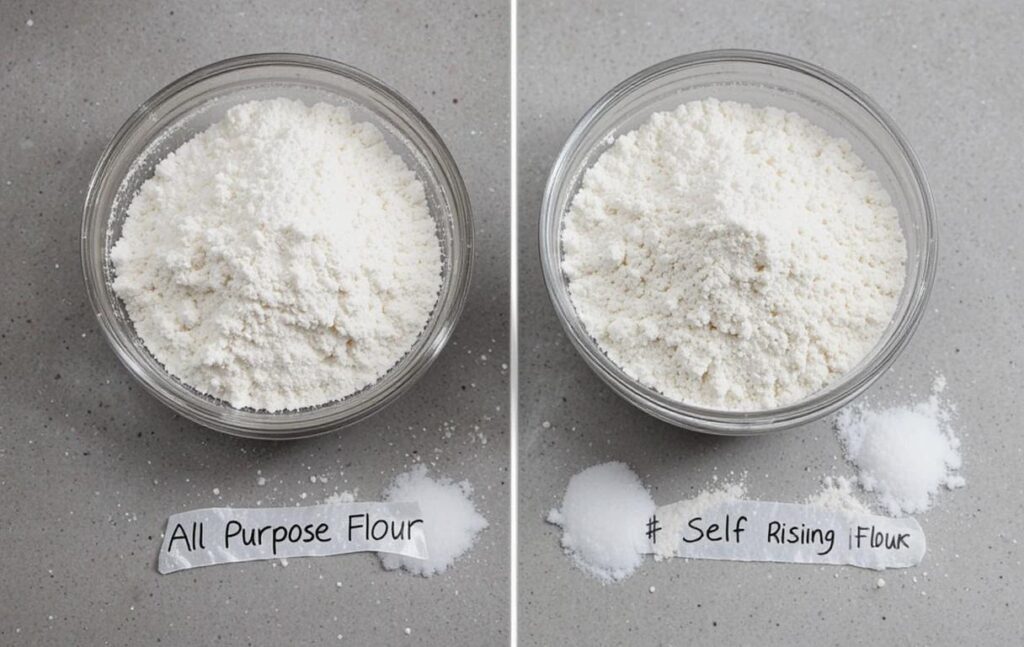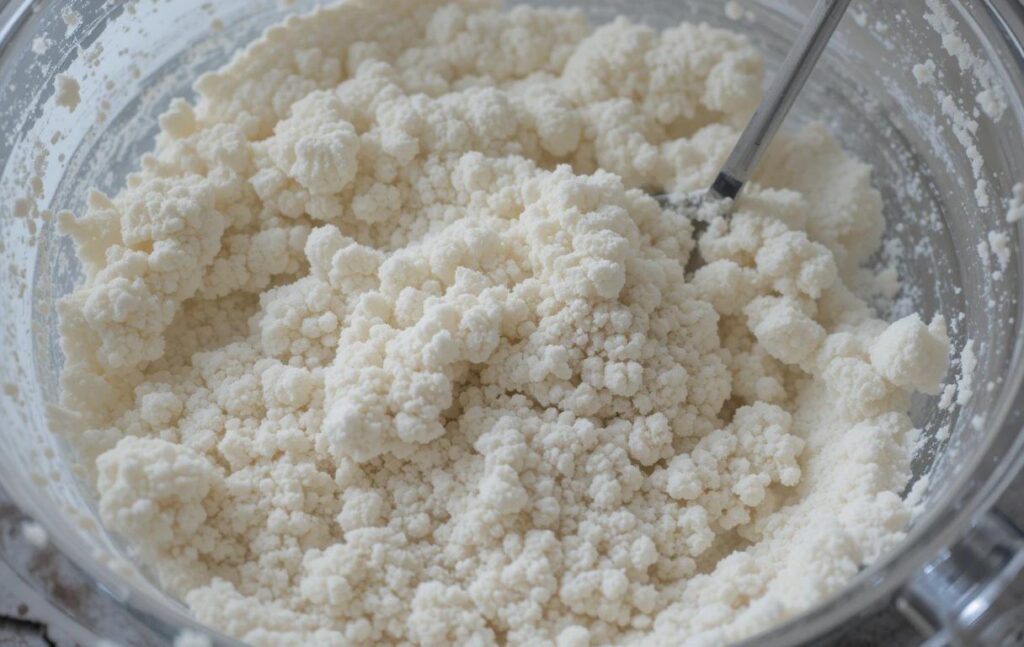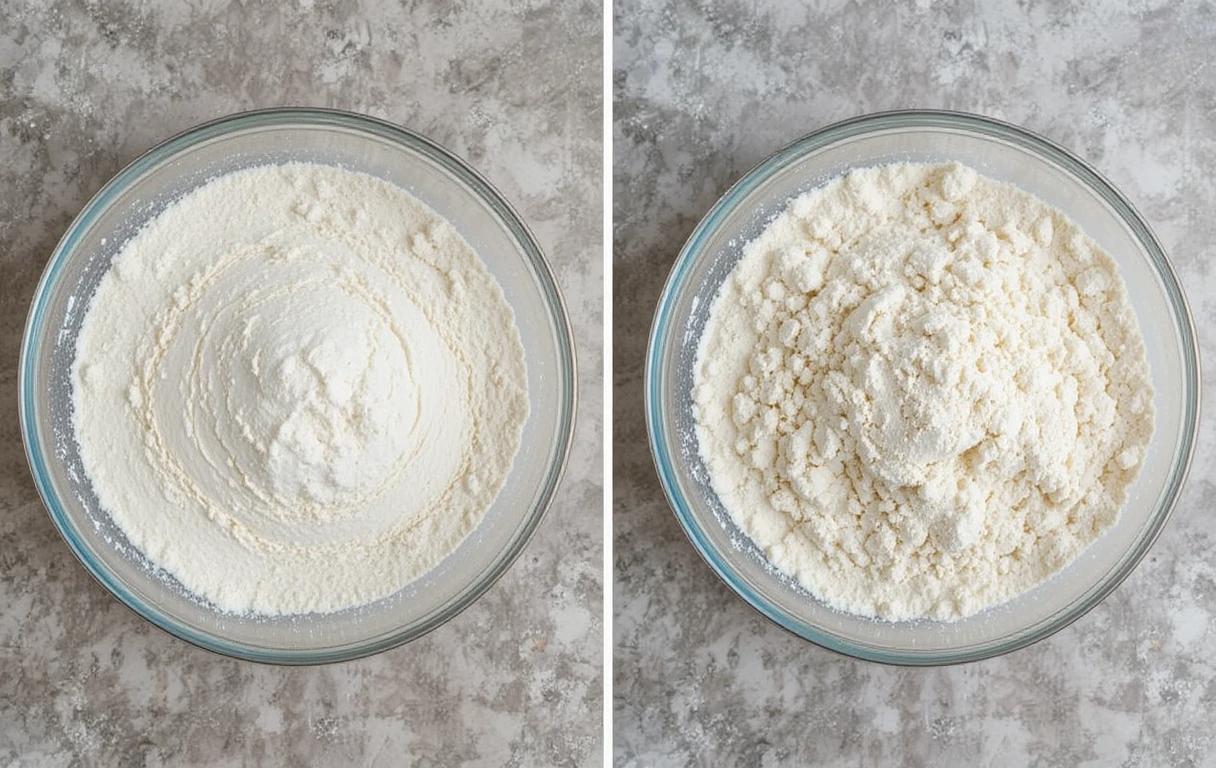Can I Substitute All-Purpose Flour for Self-Rising Flour?
Baking is both an art and a science, and using the right ingredients is key to achieving delicious results. One common question home bakers face is: Can you substitute all-purpose flour for self-rising flour? The short answer is yes, but with some careful adjustments. Understanding the differences between these two types of flour and how to substitute them properly can save your recipe from potential disaster.
In this article, we’ll explore what makes all-purpose and self-rising flour unique, their roles in baking, and the best way to substitute one for the other without compromising flavor or texture. Whether you’re caught mid-recipe without self-rising flour or want to experiment with a new baking technique, this guide has you covered.
What is All-Purpose Flour?
All-purpose flour, often referred to as “AP flour,” is a versatile and widely used ingredient in baking and cooking. Its name reflects its adaptability, as it can be used for a variety of recipes, ranging from bread to cookies and even sauces.
Composition of All-Purpose Flour
All-purpose flour is made from a blend of hard and soft wheat, typically with a moderate protein content of 10-12%. This balance provides enough structure for bread and other yeast-based recipes while remaining soft enough for tender cakes and pastries.
- Protein Content: Higher protein flour produces more gluten, which is essential for bread and pizza dough. The moderate level in AP flour makes it ideal for general use.
- Bleached vs. Unbleached: AP flour comes in both forms. Bleached flour is chemically treated for a whiter appearance and finer texture, while unbleached flour is naturally aged, with a slightly denser consistency.
Common Uses for All-Purpose Flour
The versatility of all-purpose flour makes it a staple in most kitchens. Here are some common recipes where it shines:
- Cookies and Cakes: Provides the perfect balance of texture and structure.
- Breads: Suitable for quick breads and flatbreads but may require adjustments for yeast breads.
- Sauces and Gravies: Acts as a thickening agent.
- Pastries and Pies: Offers the right consistency for flaky crusts.
What is Self-Rising Flour?

Self-rising flour is essentially a pre-mixed combination of all-purpose flour, baking powder, and salt. This unique blend simplifies baking, as it eliminates the need to add separate leavening agents. It’s a time-saver for recipes that need a quick and consistent rise.
Composition of Self-Rising Flour
The key difference lies in the added ingredients:
- Baking Powder: The leavening agent responsible for the rise.
- Salt: Enhances flavor and balances the leavening.
- Flour Base: Typically lower in protein (8-9%), making it lighter and ideal for soft, tender baked goods.
Common Uses for Self-Rising Flour
This type of flour is often used in specific recipes where its leavening and salt content are beneficial. Examples include:
- Biscuits and Scones: Creates a fluffy texture with minimal effort.
- Pancakes: Ensures a light and airy consistency.
- Cakes and Muffins: Especially effective for quick baking recipes without yeast.
Key Differences Between All-Purpose and Self-Rising Flour
To understand if and when substitution is possible, it’s crucial to note the key differences between these two flours.
1. Composition
- All-Purpose Flour: Pure flour, no added leavening agents or salt.
- Self-Rising Flour: Includes baking powder and salt in precise proportions.
2. Protein Content
Self-rising flour typically has a lower protein content than all-purpose flour, affecting the gluten development and final texture.
3. Recipe Applications
All-purpose flour is highly versatile and suitable for a wide range of recipes, while self-rising flour is best for recipes requiring a quick rise without the use of yeast.
Can You Substitute All-Purpose Flour for Self-Rising Flour?

The short answer is yes, but substituting all-purpose flour for self-rising flour requires some adjustments. Self-rising flour is a pre-mixed blend of all-purpose flour, baking powder, and salt, so when substituting, you need to replicate these additions to achieve the desired results.
How to Create a Self-Rising Flour Substitute
To turn all-purpose flour into a self-rising flour substitute, follow this simple formula for each cup of flour you need:
- 1 cup of all-purpose flour
- 1 ½ teaspoons of baking powder
- ¼ teaspoon of salt
Mix these thoroughly to ensure an even distribution of the leavening agents. Using this combination, you can mimic self-rising flour in most recipes.
Best Practices for Substituting
While the substitution process is straightforward, a few best practices can help you get the best results:
- Measure Precisely: Baking is a science, and precise measurements are critical for consistent outcomes.
- Sift the Ingredients Together: Sifting helps evenly distribute the baking powder and salt throughout the flour, ensuring uniform rising.
- Adjust for Recipe Type: If the recipe includes additional baking powder or salt, reduce those amounts accordingly to avoid over-leavening or oversalting.
Examples of Substitution in Recipes
- Biscuits: When substituting for self-rising flour in biscuit recipes, ensure the proportions are exact for a fluffy rise.
- Pancakes: All-purpose flour with added baking powder and salt will yield light, airy pancakes comparable to those made with self-rising flour.
- Muffins and Quick Breads: Use the substitution method for soft, tender textures without yeast.
When Substitution Might Not Work
Substituting all-purpose flour for self-rising flour isn’t always seamless. In some recipes, the specific composition of self-rising flour is essential for achieving the desired results.
1. Recipes Requiring Precise Leavening
Cakes, especially layered or sponge cakes, rely on a delicate balance of ingredients for structure. Any deviation in leavening amounts can lead to:
- Overrising and collapsing.
- Dense, uneven textures.
2. Adjustments to Liquid Ingredients
Leavening agents like baking powder interact with liquids and acids in recipes. Altering the type or amount of flour may require adjustments to the liquid content, especially in batters.
Tips for Avoiding Baking Disasters
- Test Small Batches: When trying substitutions for the first time, test a smaller portion of the recipe to evaluate the results.
- Consider Texture: Self-rising flour’s lower protein content can produce lighter, fluffier baked goods. Adjust mixing techniques to avoid overworking the dough when using all-purpose flour.
When Substituting All-Purpose Flour for Self-Rising Flour Won’t Work
Although it’s possible to substitute all-purpose flour for self-rising flour in many recipes, there are situations where it might not yield the desired results. Self-rising flour’s specific composition plays a critical role in certain dishes, and replacing it may disrupt the delicate balance of ingredients.
1. Recipes Requiring Precise Leavening
In recipes where the rise and texture are crucial—such as layered cakes, soufflés, or sponge cakes—substitution can lead to unpredictable results. Here’s why:
- Over-Leavening: Adding the wrong amount of baking powder can cause the batter to rise too quickly, then collapse.
- Under-Leavening: Without enough leavening, the baked good may turn out dense and flat.
- Impact on Flavor: Excess baking powder can leave a metallic aftertaste.
Example: Angel food cake relies on specific ratios of flour, eggs, and leavening for its airy structure. Using a substitute could compromise its delicate crumb.
2. Recipes With Additional Leavening Agents
Self-rising flour already includes baking powder, so recipes that call for additional leavening require careful adjustments. Without these adjustments, you risk:
- Over-leavening: This can result in uneven textures, large air pockets, or a collapsed product.
- Oversalting: If the recipe includes extra salt, combining it with the salt in the self-rising substitute can lead to overpowering flavors.
Example: Some cookie recipes use both baking soda and baking powder for their rise. Adding more leavening by using a self-rising substitute can negatively affect the outcome.
3. High-Protein Recipes
Self-rising flour has a lower protein content compared to all-purpose flour. This makes it ideal for light and tender baked goods but unsuitable for recipes requiring more gluten development, such as:
- Yeast breads
- Pizza dough
- Bagels
When gluten formation is necessary for structure and chewiness, using a self-rising flour substitute could lead to weak, crumbly doughs.
How Liquid Ingredients Play a Role

Leavening agents like baking powder interact with liquids and sometimes acids (e.g., buttermilk or yogurt) in recipes. Adjusting the flour type can alter this reaction, affecting the batter consistency and final texture. For instance:
- Too much liquid: Excess leavening may cause the batter to overflow or spread too much.
- Too little liquid: The rise might be insufficient, leading to dense or dry baked goods.
Best Practices for Recipes Where Substitution Isn’t Ideal
If substitution isn’t suitable, consider these alternatives:
- Use Store-Bought Self-Rising Flour: When possible, rely on pre-mixed self-rising flour for recipes where exact ratios are critical.
- Find Recipe-Specific Substitutes: Research substitutions tailored to your specific dish, especially for cakes or breads.
FAQs About Flour Substitution
When substituting all-purpose flour for self-rising flour, there are several questions that home bakers frequently ask. Here are clear and concise answers to help you achieve the best results in your recipes.
1. Can I Use Self-Rising Flour Instead of All-Purpose Flour?
Yes, but it depends on the recipe. Self-rising flour includes baking powder and salt, so it might not be suitable for recipes that require precise control over leavening agents. If you use self-rising flour in place of all-purpose flour:
- Omit added baking powder and salt from the recipe to avoid over-leavening or oversalting.
- Be cautious in recipes like bread or pastries where the protein content of the flour is crucial for structure.
Example: Self-rising flour is an excellent choice for pancakes but may not work well for pizza dough.
2. How Does the Protein Content Affect Baking?
The protein content of flour determines the amount of gluten it can form. Gluten affects the texture and structure of baked goods:
- High Protein (11-13%): Suitable for chewy and structured items like bread or bagels.
- Low Protein (8-9%): Ideal for soft and tender baked goods like cakes or biscuits.
Tip: Self-rising flour has a lower protein content, so substituting it in recipes requiring high-protein flour can lead to weaker dough.
3. Is It Possible to Make Self-Rising Flour in Advance?
Yes! You can create a batch of self-rising flour and store it for future use. Here’s how:
- Combine 6 cups of all-purpose flour, 3 tablespoons of baking powder, and 1 tablespoon of salt.
- Store in an airtight container in a cool, dry place for up to 6 months.
This pre-made mix is convenient for recipes that call for self-rising flour.
4. What Happens If I Skip the Leavening Agents?
Without leavening agents, your baked goods will not rise as intended. This leads to:
- Dense and heavy textures.
- Reduced volume and fluffiness.
Example: In recipes like biscuits or muffins, skipping the baking powder in self-rising flour will result in a flat and overly dense product.
5. Can I Substitute Whole Wheat Flour for Self-Rising Flour?
Whole wheat flour can be used as a substitute for all-purpose flour when making self-rising flour, but it alters the texture and flavor:
- Denser Texture: Whole wheat flour contains more bran and fiber, which can make baked goods heavier.
- Nutty Flavor: It introduces a distinctive taste that may not suit all recipes.
To substitute:
- Use the same formula (add baking powder and salt) as for all-purpose flour.
- Consider using a 50:50 blend of whole wheat and all-purpose flour for lighter results.
6. Why Do My Baked Goods Taste Metallic After Substituting?
A metallic taste often comes from using too much baking powder, a common mistake when creating a self-rising substitute. To avoid this:
- Measure baking powder precisely (1 ½ teaspoons per cup of all-purpose flour).
- Ensure it is evenly distributed to prevent concentrated spots of leavening.
Additional Tips for Successful Flour Substitution
- Always Sift Ingredients Together: This helps ensure even distribution of baking powder and salt throughout the flour.
- Test a Small Batch First: If you’re uncertain about how a substitution will perform, make a smaller portion of the recipe to avoid wasting ingredients.
- Understand Recipe Expectations: Research the specific needs of your recipe (e.g., rise, texture) before making substitutions.
How to Store Flour for Best Results
Proper storage of flour is essential for maintaining its freshness, flavor, and usability. Both all-purpose and self-rising flour can degrade over time if exposed to moisture, heat, or pests. Follow these storage tips to keep your flour in top condition.
1. Choose the Right Container
Use an airtight container to store flour. This protects it from:
- Moisture: Prevents clumping and mold growth.
- Pests: Keeps out insects and contaminants.
- Odors: Stops the flour from absorbing smells from other foods.
Tip: Glass or plastic containers with tight-fitting lids are ideal.
2. Store in a Cool, Dry Place
Temperature and humidity significantly impact flour quality:
- Optimal Temperature: 50–70°F (10–21°C).
- Avoid Heat Sources: Keep flour away from ovens, stoves, or direct sunlight.
- Low Humidity: High moisture can lead to spoilage or pest infestation.
3. Consider Freezing for Long-Term Storage
Flour can be frozen to extend its shelf life without affecting its performance in recipes:
- How to Freeze: Place flour in a freezer-safe, airtight bag or container.
- Thawing: Bring to room temperature before use to avoid clumping.
Shelf Life:
- All-Purpose Flour: Up to 12 months at room temperature; 2 years when frozen.
- Self-Rising Flour: Similar, but leavening agents may lose potency after a year.
4. Label and Rotate Stock
Always mark the container with the purchase or storage date and use older flour first. This practice ensures that you’re using the freshest ingredients in your baking.
Conclusion
In baking, understanding your ingredients is as crucial as following the recipe. While substituting all-purpose flour for self-rising flour is possible, it requires precise measurements and awareness of the recipe’s needs. Adding baking powder and salt to all-purpose flour is a simple way to replicate self-rising flour in most cases, but certain recipes demand more careful adjustments.
By knowing when and how to substitute, you can tackle unexpected shortages and still achieve delicious results. With proper storage techniques, you can keep your flour fresh and ready for use, ensuring that your baking projects are always a success.
Self-Rising Flour
Related Recipes
- “Tuna Tomato Sauce Pasta Recipe“: A tomato-based recipe showcasing another way to use tomatoes.
- “Baked Chicken Fettuccine Alfredo with Broccoli“: Another comforting dish that can be complemented with tomato-based sauces.
Ingredient-Focused Content
- “Lions Mane Mushroom Recipe“: Suggest using a tomato gravy as a flavorful addition for plant-based dishes.
Cooking Techniques and Enhancements
- “Mango Habanero Salsa“: Explore complementary uses of sauces and gravies for flavor diversity.
Storage and Reuse Tips
- “Sous Vide Recipes“: Recommend tomato gravy as a sauce for sous vide-cooked meats or vegetables.
- “Ocean Spray Cranberry Sauce Recipe“: Guide readers on making and storing sauces, including tomato gravy.

